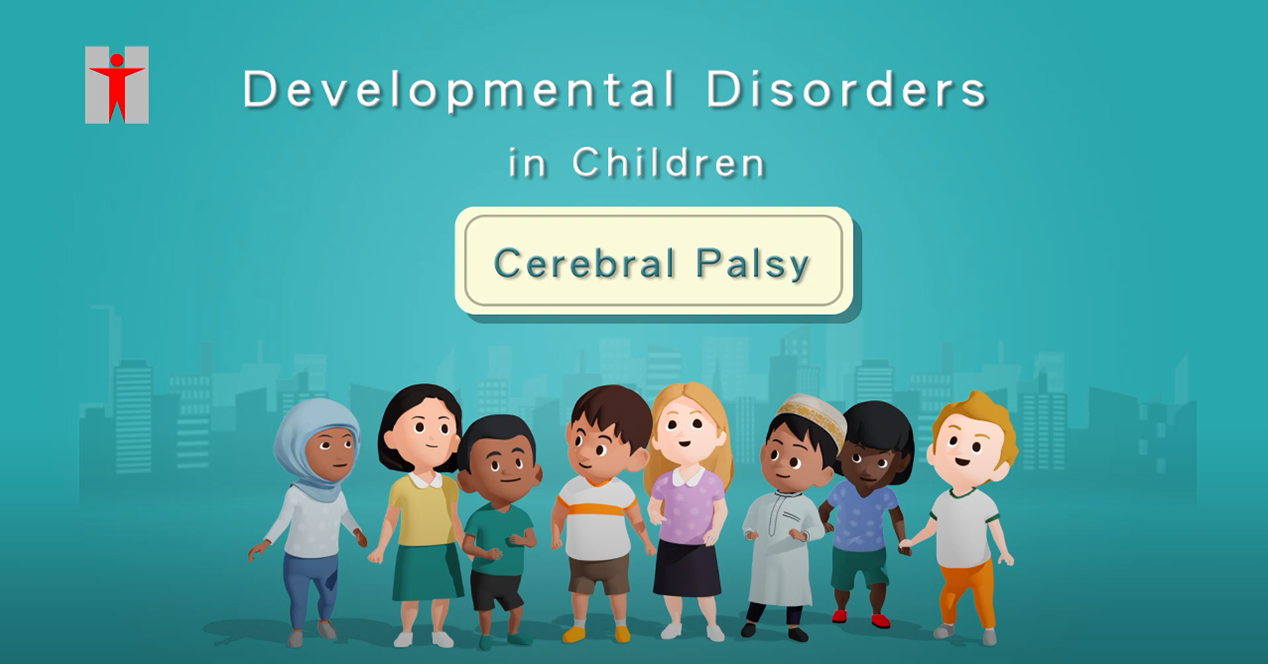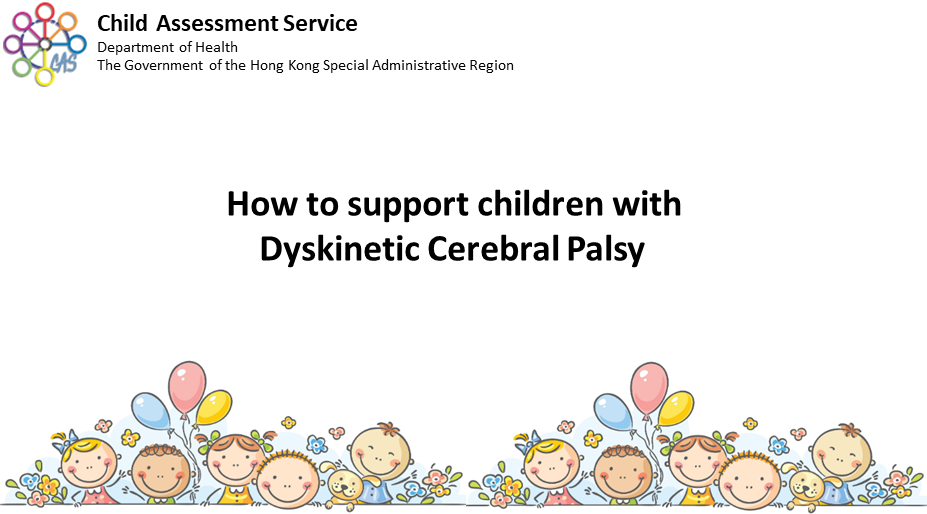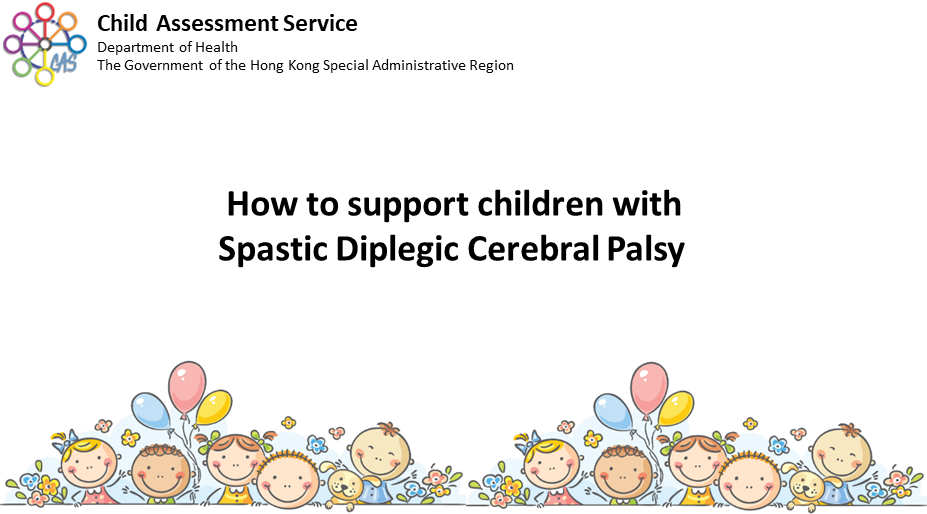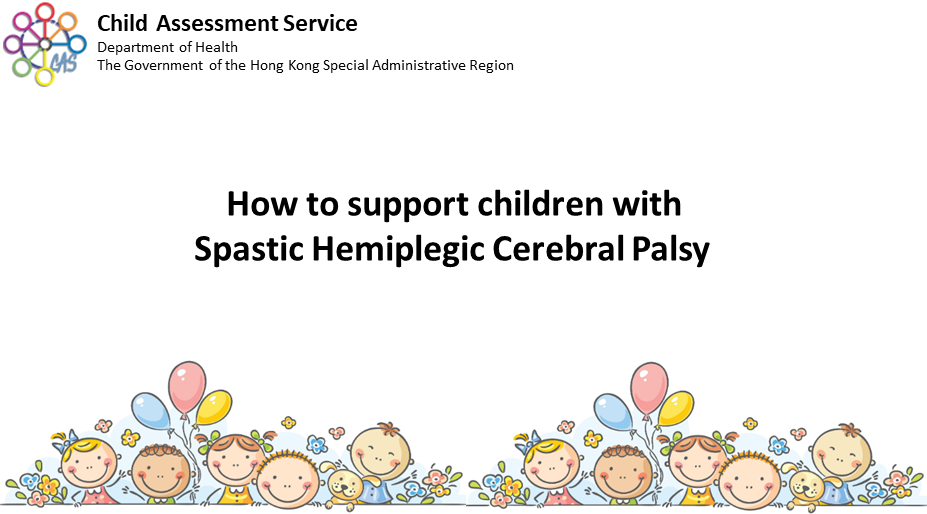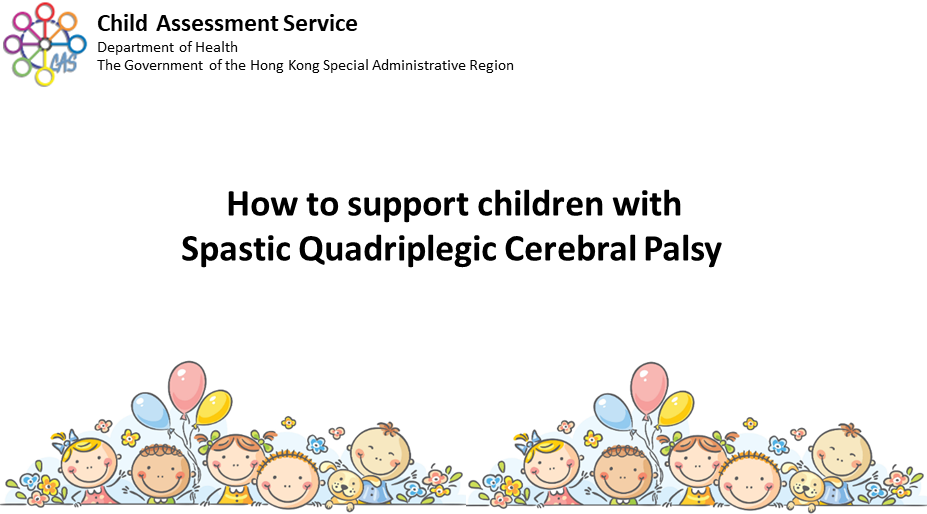Cerebral Palsy
Cerebral Palsy (CP) is a broad term that describes a group of disorders of development that primarily affect movement and posture. CP causes limitation of activity, and may be accompanied by disturbances of vision, hearing, sensation, cognition, communication, behaviour and seizure. CP can be classified according to motor types: spastic, dyskinetic, ataxic or mixed; by site: hemiplegia (one side of the body), diplegia (legs more affected than arms), triplegia (three limbs) or quadriplegia (four limbs); or by severity of effect on motor function.
Motor deficits of children with CP often include:
- Delayed motor milestones
- Persistent primitive reflexes
- Abnormal muscle tone, e.g. spasticity (rigid baby) or hypotonia (floppy baby)
- Abnormal walking pattern and movement
- Early hand dominance
Children with CP may present in different ways depending on the type of involvement or combinations thereof.
Children with spastic CP:
Children with spastic CP have increased tone in the muscles, resulting in unusual postures and/or abnormal movements. There may be difficulty in diaper change due to spastic hip muscles, scissoring of legs and tiptoeing while standing, fisting of hands and difficulty in swallowing. Children with hemiplegia may show early hand dominance before the usual age of 18 months. The gait of children with diplegia is characterized by flexed posture at the hips and knees. Complications may include joint contractures, hip dislocation and scoliosis.
Children with dyskinetic CP:
Children with dyskinetic CP have involuntary, uncontrolled, recurring and occasionally stereotyped movements. Speaking may trigger facial grimacing, and with the abnormal oromotor muscle tone, causes production of unclear sounds.
Children with ataxic CP:
Children with ataxic CP are unsteady, wobbly and uncoordinated.
CP is a disorder that affects approximately 2.9 children per 1000 school-age children worldwide. In Hong Kong, the estimated age specific prevalence for primary school-age children is around 1-1.5 per 1000 live births.
CP is caused by injury to the immature brain of a child.
Maternal factors:
CP could result from various conditions during the antenatal period. These may include maternal use of alcohol or illicit drugs, intrauterine infection, maternal high blood pressure or placental complications.
Before, during and after birth:
Any trauma before, during or after birth leading to brain injury can cause CP. Malformations of the brain, bacterial or viral infections or hypoxic injury to the brain due to prolonged or complicated labour, can also cause CP.
Genetic factors:
Genetic factors are estimated to be involved in 10 to 30% of CP cases.
Children with CP are likely to have other developmental disabilities, including hearing impairment, visual impairment, intellectual disability, language delay, epilepsy, failure to thrive and frequent chest infection resulting from oromotor problems.
The general approach of management is to treat or alleviate the increased muscle tone and specific complications, and to provide necessary equipment and accommodations at home and school. Education for the child, family as well as caretakers on the management of CP is crucial for optimal care of the child.
Physiotherapy, occupational therapy and orthoses:
These measures are usually provided from the early years, to help reduce spasticity, prevent contractures and promote functioning.
Medical:
Medical intervention mainly aims to alleviate spasticity and involuntary movements (dyskinesia). Medication may be administered through oral drugs, infusion into the spinal cord or injection into the spastic muscles. Commonly used drugs include oral baclofen, trihexyphenidyl, and botulinum toxin A or B injections.
Surgical:
Orthopaedic surgery can be useful for correcting fixed deformities. Selective dorsal rhizotomy (SDR) is a surgical procedure that aims at reducing spasticity by removal of certain nerve fibres which supply individual spastic muscles.
Besides managing the increased muscle tone, training to improve their adaptive functioning is also important. These include the management of drooling, feeding and swallowing problems, provision of devices for seating, standing and walking, mobility aids (including wheelchairs) and devices for assisting the child in communication (augmentative alternative communication). These devices can improve the quality of life.
Locally, children with CP are supported through a range of therapies and training during their pre-school years. Support in mainstream school is provided by the Hong Kong Education Bureau, in addition to the regular therapy services available in local hospital clinics. Special arrangements in public examinations may be provided by the HK Examinations and Assessment Authority as needed. Special schools with more comprehensive accommodations, including residential facilities, are available for students requiring more support.
Children with CP who are unable to sit by age 2, unable to walk by age 7, or have persistently inappropriate reflexes for their age have a poorer chance of gaining independent walking ability later on in life. If they have good head control by 9 months, sit independently by age 2, and crawl by age 2½, the chance for independent walking will be higher.
Adults with CP may have secondary complications, including musculoskeletal deformities and chronic pain, overuse syndromes of tendons, arthritis and degenerative changes (commonly over the hip, knee, ankle, lumbar and cervical spine). Active participation in therapy is necessary for prevention of these complications.
With appropriate support, persons with CP are able to communicate effectively with others, benefit from education, and participate in community life and appropriate employment.
- Special Education Resource Centre, Education Bureau, HK
http://www.edb.gov.hk/en/edu-system/special/resources/serc/ - American Academy for Cerebral Palsy and Developmental Medicine
http://www.aacpdm.org - CanChild
http://www.canchild.ca - Scope
http://www.scope.org.uk - Surveillance of Cerebral Palsy in Europe
http://www.scpenetwork.eu/ - United Cerebral Palsy Association
http://www.ucp.org
- McIntyre, S., Taitz, D., Keogh, J., Goldsmith, S., Badawi, N., & Blair, E. (2013). A systematic review of risk factors for cerebral palsy in children born at term in developed countries. Developmental Medicine and Child Neurology, 55(6),499-508.
- Maureen S Durkin, Ruth E Benedict, Deborah Christensen, Lindsay A Dubois, Robert T Fitzgerald, Russell S Kirby, Matthew J Maenner, Kim Van Naarden Braun, Martha S Wingate, Marshalyn Yeargin-Allsopp (2016).Prevalence of Cerebral Palsy among 8-Year-Old Children in 2010 and Preliminary Evidence of Trends in Its Relationship to Low Birthweight. Paediatr Perinat Epidemiol. 2016 Sep;30(5):496-510.
- Alastair H. MacLennan, Sara Lewis, Andres Moreno-De-Luca, Michael Fahey, Richard J. Leventer, Jozef Gecz et al. (2019) Genetic or Other Causation Should Not Change the Clinical Diagnosis of Cerebral Palsy. J Child Neurol. 2019 Jul; 34(8): 472–476.
- Rosenbaum, P., Paneth, N., Leviton, A., Goldstein, M., Bax, M., Damiano, D. & Jacobsson, B. (2007). A report: the definition and classification of cerebral palsy April 2006. Developmental Medicine and Child Neurology Supplement, 109, 8-14.
- Yam, W. K., Chan, H. S., Tsui, K. W., Yiu, B. P., Fong, S. S., Cheng, C. Y., & Chan, C. W. (2006). Prevalence study of cerebral palsy in Hong Kong children. Hong Kong Medical Journal, 12(3), 180-184.
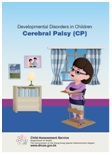
Short Factsheet
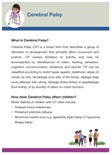
Long Factsheet
